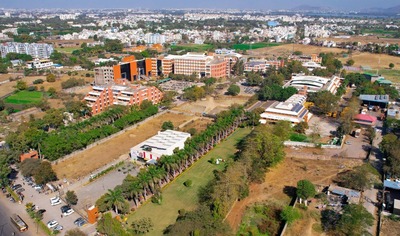The capacity to learn is a gift; the ability to learn is a skill; the willingness to learn is a choice.
When learning is talked about it is important to get in tune with the four pillars that help you gain a foothold and then foundation in the learning. These pillars help you get set for life and bring in marvelous ways to reach successful outcomes.
The 4 pillars that we are talking about are Skills, Knowledge, Understanding and Aptitude. How do these help? Let’s have a look:
Knowledge: Knowledge is the terra firma of any kind of learning. Knowledge brings into focus the concepts and the laws that help build a great foundation on learning anything. It is knowledge that gets a learner to build possibilities on. When knowledge is strong, skill building is possible.
Skills: Skill based learning is one of the most amazing ways to have a greater correlation between learning and real world application. With skills, one can be better adjusted to the world of work or can help one gain better entrepreneurial success.
Understanding: Having knowledge and skills is fine but then there is a thin line of Understanding in between that enables a learner to make connections and apply the learning. Without understanding where to apply a particular skill set or where to bring out the knowledge component is not possible. Understanding acts as a linkage with other people too especially in working as a team.
Aptitude: Have you noticed some people working hard but never being able to do some tasks well? That could be because of aptitude. If a learner does not have aptitude for science and yet opts for it as specialization and then despite hard work isn’t successful it could be that that learner has no aptitude for it. Identifying aptitude for learning something or a particular field of study is very important.
While these are the four pillars of learning that are useful for every learner - these coincidentally also correspond to the 4 pillars of education too.
According to UNESCO’s Learning: The Treasure within (1996), education throughout life is based on four pillars: learning to know, learning to do, learning to live together and learning to be.

• Learning to know, by combining a sufficiently broad genera! knowledge with the opportunity to work in depth on a small number of subjects. This also means learning to learn, so as to benefit from the opportunities education provides throughout life.
• Learning to do, in order to acquire not only an occupational skill but also, more broadly, the competence to deal with many situations and work in teams. It also means learning to do in the context of young peoples' various social and work experiences which may be informal, as a result of the local or national context, or formal, involving courses, alternating study and work.
• Learning to live together, by developing an understanding of other people and an appreciation of interdependence - carrying out joint projects and learning to manage conflicts -in a spirit of respect for the values of pluralism, mutual understanding and peace.
• Learning to be, so as to develop one's personality and be able to act with ever greater autonomy, judgement and personal responsibility. In that connection, education must not disregard any aspect of a person's potential: memory, reasoning, aesthetic sense, physical capacities and communication skills.
So we have:
Learning to know correlates with the knowledge of the learner
Learning to do correlates with the skills of the learner
Learning to live together correlates with the understanding of the learner
Learning to be correlates with the aptitude of the learner

 Enquire Now
Enquire Now



